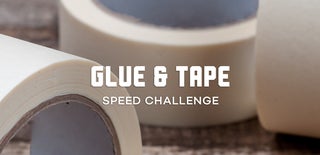Introduction: Hexagonal Planter
In this instructable I am going to show you how to make a hexagonal planter using nothing but a table saw, sander, glue, and painters tape. This is a super simple project and very few tools are required.
Supplies
boards that are the same thickness and width to make the sides
a board large enough to cover the bottom of your planter
wood glue, painters tape, and sanders ( bench and random orbital are what I used)
optional- digital angle finder
Step 1: Setting Up the Table Saw and Cutting the Pieces
Start by setting up your table saw to cut a 30 degree cut on your pieces of wood. I set my table saw at 120 degrees. I found this angle by taking 90 degrees, the angle the blade was at in the table saw to the bed, and adding 30 to it. After I had my blade angle set up correctly I measured to find out what size I needed to make my pieces. Using a hexagon calculator I found online I typed in my long diagonal of 7 inches, I wanted the planter to be 7 inches from one corner to the furthest away corner, and it told me each piece should be 3 1/2 inches long. I then set a stop block on my table saw sled at 3 1/2 inches and started cutting. I made sure to cut off the first angle and then flip over my board and scoot it to the stop block and make the next cut. Then flip and do it again. This went super fast and I was able to make enough pieces to make 5 separate hexagons.
Step 2: Glue Up
Now you want to take 6 pieces and lay them out end to end, making sure the short side of the board is touching the table top on each piece. This will allow you to use the blue painters tape to connect all the pieces together. After you have them all connected put them on edge and to a dry fit. If your table saw was set up correctly you should be able to touch all sides together with just a little pressure and you shouldn't have any gaps in your corners. After you get the dry fit done flip them back onto the table with the painters tape on the table top. Now apply a little bit of wood glue to each of the angles that will be touching each other. Flip them back on their edge and fit them together again. Add a piece of tape to the last corner so that it hold it all together tightly. Make sure to wipe away any squeeze out, especially on the inside since it will be much harder to sand away later.
Step 3: Add the Bottom
Now find a piece of wood that is large enough to cover the entire bottom piece and trace out the inside of your hexagon onto it. I used a band saw to cut out the bottom piece but you could easily use a jig saw or coping saw. Make sure to cut on the outside of your line leaving the line. After you have cut it out go to the bench sander and sand each side till it is on the line. If your piece will not fit in feel free to sand a little more, just be careful not to sand away to much, you want a fairly tight fit. Now apply the wood glue to each side of the bottom and fit it into the bottom of the planter.
Optional: depending on what type of planter you are making you can drill a few holes into the bottom for drainage.
Step 4: Glue Your Hexagons Together
Since I used some scrap white oak that was not very tall I needed to glue a couple hexagons on top of each other. I did make enough hexagons to make 2 separate planters. I started by putting glue on the top of bottom piece and putting the middle piece on. After I was happy with the flushness of all pieces I used painters tape to hold it down. I went around and added tape to all 6 sides of the planter to make sure I was getting a good connection all around. Then I added glue to the top of that piece and put the top piece on as well. When putting the glue on for the top piece I made sure to run the tape from the top piece all the way down to wrap around the bottom of the bottom piece. Make sure you wipe away and excess glue from the inside. Now give it a couple hours to dry.
Step 5: Sanding and Finishing
Now that your piece is dry take all of the tape off and start sanding. I used the belt sander to make sure that all the sides were flush with each other and then switched over to the random orbital sander. I rounded off the corners just a little bit so that they weren't as sharp and sanded to around 220 grit. For a finish I used spar urethane on the inside and applied it fairly thick, since dirt and water would be in that part is doesn't need to look super finished. For the rest of it I applied a couple coats of boiled linseed oil to seal it and bring out the depth of the grain. After that was dry I applied a couple thin coats of spar urethane mixed with mineral spirits to give it some added protection.
Step 6: Put in Your Plant
Now you are ready to put your plant in. A friend recently gave me a medium sun house plant so I built this planter for that plant. I think its a lovely little home for it. Now I just need to give it a name.

Participated in the
Glue & Tape Speed Challenge













